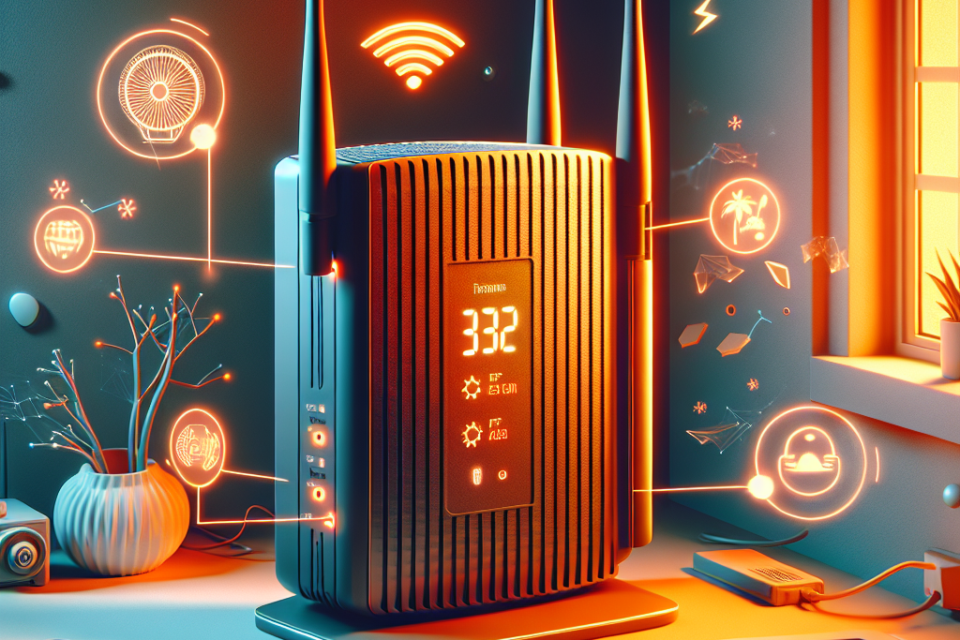Why is my router overheating, and how can I prevent it?

Introduction
In today’s digital era, a stable internet connection is essential for both personal and professional tasks. The router is a critical device in maintaining that connection. However, routers can sometimes overheat, leading to diminished performance and potential damage. This article delves into why routers overheat and provides practical solutions to prevent it.
Common Reasons for Router Overheating
Routers can overheat for various reasons, leading to reduced efficiency and possibly damaging the device. Understanding the root causes is the first step in preventing the issue.
- Inadequate Ventilation – Routers need proper airflow to dissipate heat. Placing them in confined spaces or covering them can restrict airflow.
- Excessive Usage – Heavy bandwidth usage can cause the router to work harder, generating more heat.
- Accumulation of Dust – Dust can block vents and reduce airflow, leading to overheating.
- Outdated Firmware – Old firmware may not be optimized for efficient performance, causing the router to overheat.
- Environmental Factors – High ambient temperatures can contribute to the router’s overheating.
- Poor Quality or Faulty Hardware – Low-quality components or hardware malfunctions can lead to overheating.
Table: Common Reasons for Router Overheating
| Reason | Description |
|---|---|
| Inadequate Ventilation | Confined placement restricts airflow. |
| Excessive Usage | Heavy bandwidth consumption generates more heat. |
| Accumulation of Dust | Dust blocks vents and reduces airflow. |
| Outdated Firmware | Old firmware may not be optimized for performance. |
| Environmental Factors | High room temperatures affect the router. |
| Poor Quality or Faulty Hardware | Inferior or malfunctioning components lead to overheating. |
Preventing Your Router from Overheating
By taking proactive measures, you can ensure your router stays cool and functions optimally.
Ensure Proper Ventilation
-
Placement: Place your router in an open space where airflow is not obstructed. Avoid putting it in enclosed areas like cabinets or behind furniture.
-
Elevation: Elevate your router using a stand or shelf to promote airflow around the device.
-
Vent Cleaning: Regularly clean the vents to prevent dust buildup using compressed air or a soft brush.
Optimize Usage
-
Monitor Bandwidth: Regularly check your network’s bandwidth usage. Limit high-bandwidth activities, especially when the router is already warm.
-
Schedule Downtime: Turn off the router during non-peak hours or when not in use to allow it to cool down.
Firmware Updates
-
Regular Updates: Ensure your router’s firmware is up-to-date. Manufacturers often release updates to improve performance and efficiency.
Environmental Adjustments
-
Cool Environment: Place your router in a cooler area away from direct sunlight and heat sources.
-
Room Temperature: Maintain a comfortable room temperature, especially in the area where the router is located.
Hardware Maintenance
-
Quality Hardware: Invest in high-quality routers known for efficient heat management.
-
Regular Checkups: Periodically inspect your router for any signs of damage or malfunctions.
Conclusion
Router overheating is a common issue but can be managed with the right strategies. By ensuring proper ventilation, optimizing usage, updating firmware, adjusting the environment, and maintaining hardware, you can prevent overheating and maintain a robust and reliable internet connection. Implementing these practices will not only extend the lifespan of your router but also ensure a smoother online experience.
Keeping your router in top condition requires vigilance and proactive measures. Regular maintenance and mindful placement are key elements to help you avoid the frustrations of an overheating router.
